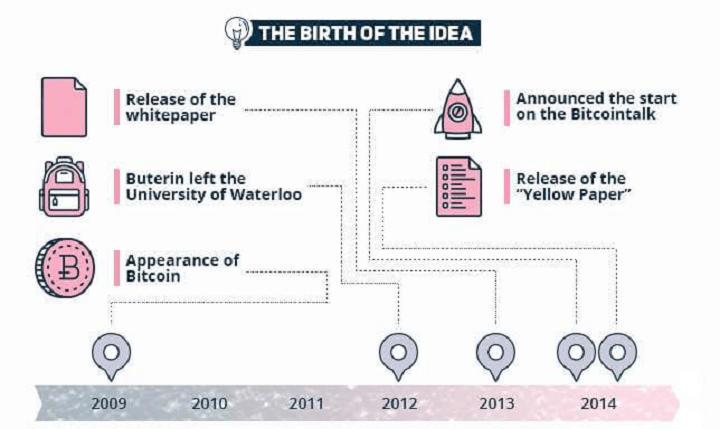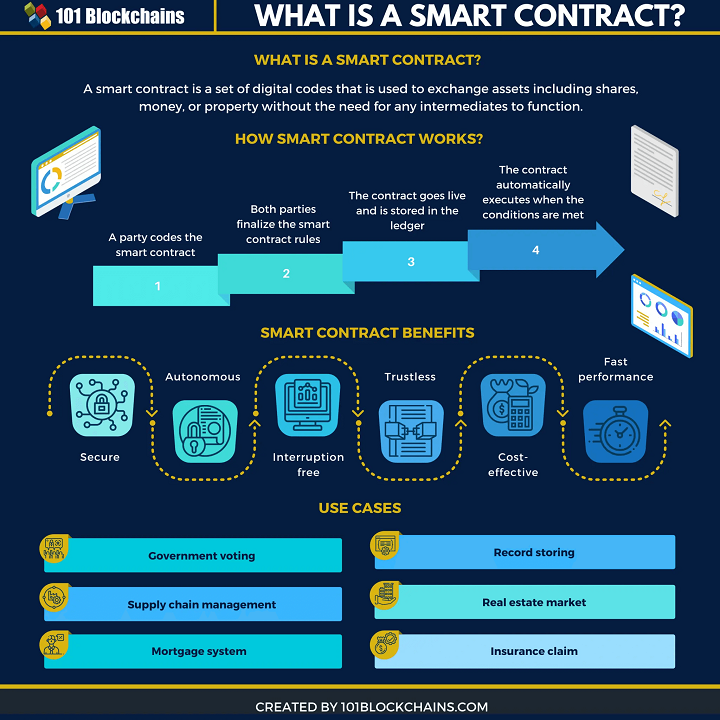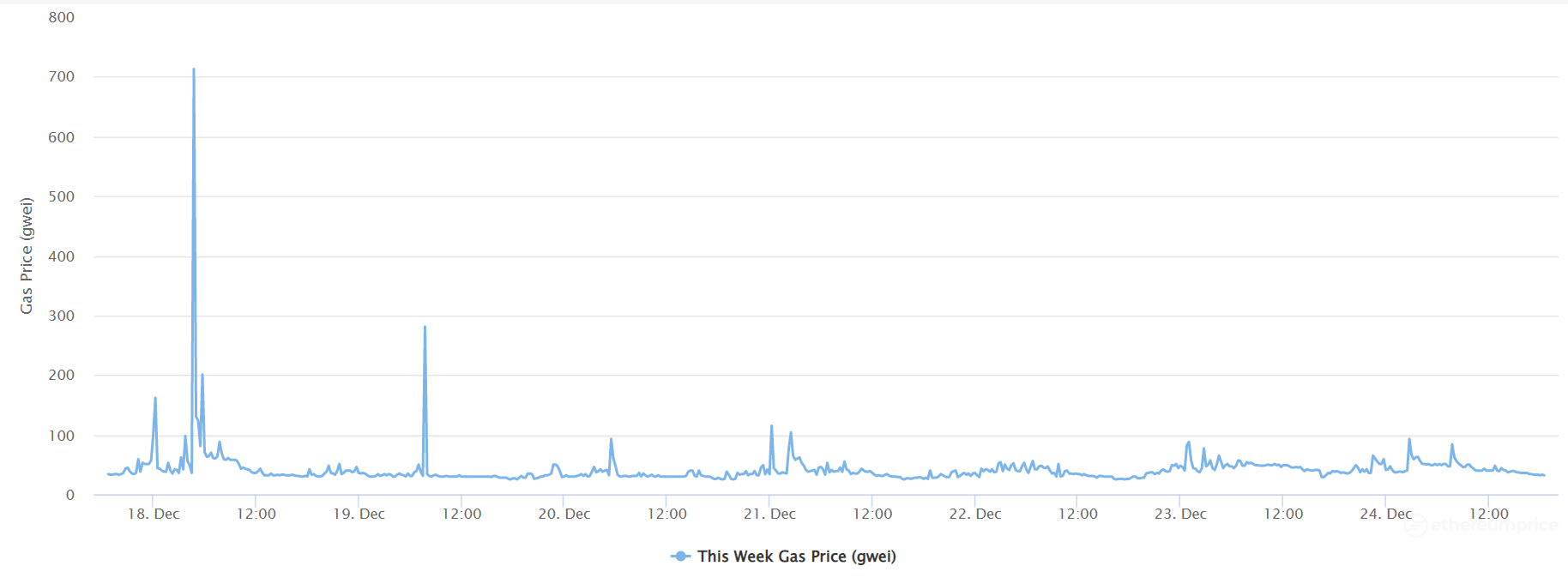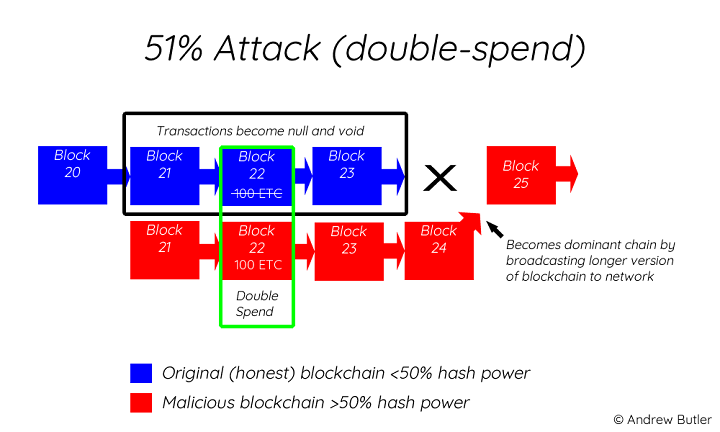By Udisha Alok
Ethereum and Ether trading have garnered a widespread appeal over the years, albeit a very short span of time. Have you ever wondered what they are and how is it that Ethereum Trading happens? Where can you gain a complete understanding about Ethereum and Ether?
In this blog, we take a peek at Ethereum and all the changes it brings to the world that had been swept off its feet by Bitcoin.
We cover the following:
- What is Ethereum?
- A brief history of Ethereum
- Features of Ethereum
- Ethereum use cases
- Disadvantages of Proof of Work
- Ethereum 2.0
- Bitcoin vs Ethereum
- An Ether trading strategy
Let’s dive in!
What is Ethereum?
In our earlier blogs, we explored blockchain technology and Bitcoin - the first cryptocurrency that brought blockchain technology into being. Bitcoin was a decentralized way of transacting financially. Though it was a huge breakthrough, this distributed ledger was limited to storing transactions.
But,
- What if we could also store and execute code on the blockchain?
- What if we could transact based on some pre-agreed conditions?
- Or use the blockchain to run our programs?
- Enter Ethereum!
Armed with Smart contracts written in Solidity (its native programming language) and Ether (its currency) - with the entry of Ethereum, the world as we knew it changed forever!
A brief history of Ethereum

In 2011, a 17-year old Russian-Canadian teenager, Vitalik Buterin, found himself very interested in Bitcoin. He was so fascinated by it that he started ‘Bitcoin Magazine’ and actively started writing for it.
He felt that Bitcoin could become more potent with a scripting language that would allow it to run code. However, failing to get an agreement from the Bitcoin community, Buterin proposed a new platform called Ethereum in his whitepaper on November 27, 2013.
Ethereum is introduced as a ‘next-generation smart contract and decentralized application platform’ in its white paper. In contrast, Bitcoin was introduced simply as ‘a peer-to-peer electronic cash system’.
On April 1, 2014, Gavin Wood, the CTO of the Ethereum project at the time, released the Ethereum yellow paper. The founders launched a crowdfunding campaign that ran between July 22 to September 2, 2014, where they sold Ether (the Ethereum currency) in exchange for Bitcoins and collected more than $18 million.

Ethereum went live in July 2015 - its first live release known as Frontier.
Ethereum has a long list of co-founders. You can read more about the history of Ethereum here.
Features of Ethereum
What is Ether?
Ether (ETH) is the native currency of the Ethereum blockchain. It is the fuel that powers it. Like Bitcoin, Ether is a peer-to-peer currency that you can use to transact or buy ‘gas’. Gas is the term used for transaction fees in the Ethereum universe. You need gas to pay for the computation of any smart contract or transaction on the Ethereum blockchain.
What are Smart Contracts?
A contract is an agreement between two parties. Smart contracts are simply contracts written in the form of a computer program. Therefore, smart contracts outline the terms and conditions for transferring any asset, not necessarily currency, in a programming language. The assets here could be anything- shares, money, property, or any digital asset.
Smart contracts can be created by anyone on the Ethereum blockchain. One significant characteristic of a smart contract is that once they are on the blockchain, it cannot be altered in any way. They are immutable.
You may, however, upload another version of the contract at a later time with modified terms and conditions. And then, going forward, the transactions would be done based on the revised terms and conditions.
In contrast to the traditional contracts where a central authority verifies the contracts, the smart contracts are verified by the blockchain. The contracts are coded in the format of simple if-then-else kind of statements and get automatically executed when the predefined conditions are met.
On Ethereum, Solidity is usually used for coding smart contracts. Other popular languages supported for coding smart contracts are Vyper, Yul, and DAML.

Ethereum Virtual Machine
A virtual machine is a program that emulates a computer. It has a CPU, memory, etc., like a physical computer. The Ethereum Virtual Machine (EVM) is like a decentralized computer network spread across the blockchain, except each computer is a virtual machine.
Each node on the blockchain runs this EVM. The smart contracts are uploaded and deployed on the EVM, and the nodes use the EVM to maintain consensus across the blockchain.
The EVM is a sandboxed isolated runtime environment for smart contracts. The EVM understands the language of smart contracts. We can code and test our code on this standalone environment, and when we are ready to deploy it, we can do so on the blockchain.
Solidity
Solidity is an object-oriented high-level programming language similar to C++, Python, and Javascript. It has been designed to develop smart contracts on Ethereum. As mentioned above, these smart contracts are run on the EVM.
The Solidity compiler compiles the code into an EVM bytecode and a Contract ABI (Application Binary Interface). The bytecode is an executable code written in a low-level programming language, understandable by the EVM, and the ABI is an interface between the smart contract and the bytecode.
In addition to Ethereum, Solidity is also available on other platforms such as Ethereum Classic, Binance chain, Avalanche, Tron, etc.

Gas
Gas is the fees paid for processing transactions on the Ethereum blockchain. The amount of gas required depends on the complexity of the transaction- a simple transaction would require less gas, and a complex transaction would require more gas.
More gas is also required to prioritize a transaction. Since the block sizes are limited, a higher gas amount incentivizes the miners to pick up the transaction sooner. Gas prices are also dynamic and change depending on the traffic in the network.
Gas prices are denoted in gwei. Here, g stands for ‘gas’ and ‘wei’ refers to Wei Dai, who introduced the concept of b-money. 1 ETH is equal to 1,000,000,000 gwei.

Ethereum has been facing criticism for its high gas fees. The transactions that do not meet the miners’ threshold may be delayed or simply rejected. At times the fees have gone up to $100! Users may need to time their transactions for timings when the gas fees are low, using data from various sites. This is frustrating for the users who are looking for cheaper and more efficient options.
While Ethereum 2.0 attempts to solve this problem, high gas fees and low slow transaction times will continue to be a bane to users until Ethereum moves completely to PoS. High gas fees make it impossible to use Ethereum for micropayments, which is one of its essential use cases.
Meanwhile, many rival blockchains like Solana, Cardano and Avalanche, are coming up with more efficient and affordable systems which are gaining popularity.
Ethereum use cases
Decentralized Applications
With a decentralized network come decentralized applications (dapps)!
Let us look at the structure of the applications that we have been using traditionally. Usually, there is a front-end, a user interface, and a back-end, a database located on a single computer or a server.
But what if the database is now located on a blockchain- a decentralized network of nodes?
Over the years, the face of the web changed from Web 1.0 with static scripts in the front-end to Web 2.0 with dynamic scripts in the front-end leading to better user interaction. Now we have Web 3.0 with the back-end on the blockchain, truly revolutionizing the structure of applications.

When you log into a regular application, the data is fetched from the database via an API. Similarly, when you log into a dapp, the data will be fetched from the blockchain via a smart contract interface. Some famous examples of dapps are:
- Steemit (a blogging and social media website)
- Uniswap (a decentralized cryptocurrency exchange)
- Augur (a betting platform)
- Cryptokitties (a game)
- Ethlance (the first job market platform working completely on Ethereum blockchain)

Decentralized Autonomous Organizations
What is an organization? It is an organized set of people with a particular purpose.
The purpose is defined by the guidelines of the organization, and usually, there is a hierarchical structure that is in place.
Now, in the background of our knowledge of blockchain, imagine a decentralized organization that is controlled by its members, which is transparent, with the guidelines well-defined in the form of computer programs. Its accounts and records are maintained on the blockchain. This is a Decentralized Autonomous Organization (DAO).
The smart contracts can be coded to include all the processes and functions of the organization so that it becomes self-sustainable and can run without any human involvement. This means that they cannot be shut down by a centralized authority- they will keep running. In case of any change in the rules, the blockchain reaches a consensus, and the change is implemented in the code.
A simple example of a DAO can be a driverless cab service that can pick up and drop customers, generate payments, and re-fuel itself at the gas stations, and upload its accounts to the blockchain- all based on smart contracts.
Decentralized Finance
Decentralized Finance (DeFi) is a decentralized financial ecosystem based on blockchain that uses smart contracts instead of centralized authorities or intermediaries. So no exchanges, banks, brokerages, etc.!
A marketplace that never sleeps.
With DeFi, the market is always open and open to all. No long application process is required to use its services. Since there are no human workers working on running it, these DeFi markets run 24x7.
All users remain pseudonymous, and it provides the infrastructure to trade with strangers in a trustless way. The transactions are processed in minutes instead of days, and the data is maintained transparently on the blockchain.
DeFi offers an alternative to almost all financial transactions like sending money across the globe, borrowing money, buying insurance, trading, etc.
MakerDAO is one of the leading examples of a DeFi application.
Pros and Cons of DEFI are as follows:
|
DEFI |
|
|
Pros |
Cons |
|
Access to all |
In early stages |
|
Transparency |
Lack of scalability |
|
Time-saving |
Risk of scam |
|
Reduced possibility of human error |
Lack of user-friendliness |
|
No intermediaries |
High demand - high-interest rates |
Non Fungible Tokens
A non-fungible Token (NFT) is a token representing a unique and non-interchangeable item. The item here can be a song track, art, collectibles, or even real estate. Such unique items can have only one certified owner, and this proof of ownership is secured by the blockchain. Hence, the NFT represent the ownership of such unique items.
Non-fungible items have unique properties like a piece of furniture or a song. Fungible items are all alike, like apples, currency notes, etc. They can be exchanged easily as each item is the same as the other, with the same value. NFTs can also be used to represent assets in a game.
An NFT can be traded or sold on digital markets. But unlike cryptocurrencies which can be exchanged freely, the NFTs represent the underlying asset. So, content creators can either transfer the ownership of the NFT (for example, in the case of an artwork) or retain the ownership and use the NFT to earn the resale royalty (for instance, in the case of a piece of music).
Curio Cards, an online art gallery, is one of the earliest implementations of the Ethereum NFT. Some examples of NFTs are artworks, luxury sneakers, essays, and other digital assets.
The music NFT industry is growing rapidly. The Kings of Leon became the first band to release its new album as an NFT in March 2021, and in December 2021, an NFT music startup sound.xyz has raised a $5 million seed round.
Disadvantages of Proof of Work
The Proof-of-Work algorithm used by Bitcoin, and currently used by Ethereum, is very effective and popular. Here, a group of miners compete to solve a heavy-duty cryptographic puzzle. The winning node adds the block to the chain, thereby winning the reward and the transaction fees from all the transactions in the mined block.
The PoW is highly secure, incentivizes the mining nodes, and decentralizes the network.
However, it has two major disadvantages:
High energy consumption
As the Bitcoin network increased in size, so did the difficulty level of the cryptographic puzzle, which is adjusted automatically by the blockchain. As the difficulty increased, specialized hardware was designed to mine the blocks.
Currently, Bitcoin can be mined only using ASICs (Application Specific Integrated Circuits), and the mining process consumes a lot of energy.
To be clear, I strongly believe in crypto, but it can’t drive a massive increase in fossil fuel use, especially coal
— Elon Musk (@elonmusk) May 13, 2021
Many miners are setting up their data centres in regions like Canada, Russia, and the Scandinavian countries where the colder climates lower the energy consumption.
In 2021, the annual power consumption of the Bitcoin network was estimated to be 121.36 terawatt-hours (TWh). The energy costs are a concern for the miners and also adversely impact the environment.

Susceptibility to 51% attack
One of the ways a blockchain can be compromised is through a 51% attack. If a malicious party gets control of 51% of the mining power, it can prevent new transactions from getting added or reverse earlier transactions, resulting in a double-spend problem.
However, they cannot alter the blocks much further in the chain, so while this kind of attack can damage the blockchain, it cannot destroy it.

For Bitcoin, which is the largest blockchain, such an attack is hypothetical till now. But there have been instances where a mining pool briefly controlled more than 51% of the total hashing power.
Also, there have been many instances of such attacks happening on smaller blockchains where it is easier to get control of 51% of the nodes. You can read more about the various 51% attacks that have hit the crypto-world here.
Ethereum 2.0
Proof of Stake
In PoW, the miners ‘work’ to solve a problem. As you can imagine, mining requires specialized hardware and the mining nodes have to invest money in that hardware for the blockchain.
What if we took the hardware out of the picture?
Then the mining nodes can just invest coins in the blockchain. This is called Staking. The mining power is proportional to the number of coins you stake. This amount is locked for some time.
A validator is chosen at random from the participating nodes- and instead of solving a problem, the validator just validates the transactions, adds the new block, and gets the reward. Since there is no work being done here, it makes this algorithm more energy efficient.
The higher the stake, the more the chances of getting selected as a validator and earning the reward. This investment also acts as an incentive for good behaviour, as any wrong-doing may result in partial or complete forfeiture of the stake.
The proof-of-stake (PoS) is an energy-efficient alternative to the proof-of-work (PoW).
Ethereum also uses proof-of-work, but owing to the above challenges, it has decided to move to proof-of-stake as part of a significant upgrade.
Major changes in Ethereum 2.0
Ethereum is undergoing a significant transformation to Ethereum 2.0, which is focused on making it more scalable, secure, and sustainable. It has been planned in phases.
- Phase 0 introduces the PoS to Ethereum via the Beacon Chain without changing anything in the existing chain. It went live on December 1, 2020.
- In Phase 1, the beacon chain will merge with the main chain, and the entire Ethereum ecosystem will move to PoS from PoW.
- Phase 2 will introduce other improvements to enhance the security and scalability of the network so that it can process transactions at a faster pace.
You can read more about these upgrades here.
Bitcoin vs Ethereum
Both Bitcoin and Ethereum are large public blockchains that have their own cryptocurrencies that can be traded on the exchange and stored on different digital wallets. However, there are some critical differences between them.
We have summarized some of these differences below:
|
Key differences |
BITCOIN |
ETHEREUM |
|
Creator |
Created by a pseudonymous person(s) Satoshi Nakamoto in 2008 |
Created by Vitalik Buterin in 2013, along with other founders |
|
Purpose |
Created as a peer-to-peer cryptocurrency |
Created as a decentralized computing platform along with a cryptocurrency |
|
Transaction type |
Manual |
Programmable |
|
Consensus Algorithm |
Proof of Work |
Proof of Stake |
|
Mining hardware |
ASICS |
GPU |
|
Transaction Speed |
3-7 transactions per second |
15-25 transactions per second |
|
Market Cap |
||
|
Issuance limit |
21 million |
No limit |
|
Acceptability |
Accepted in more places |
Lesser than Bitcoin |
|
Global functionality |
Accepted in many places. Adopted as legal tender by El Salvador |
Used across the world in decentralized exchanges, financial transactions, etc |
|
Applications |
Monetary Exchange |
Applications in various areas like finance, art, music, etc |
An Ether trading strategy
Let us now look at an Ether trading strategy that uses a trend based technical indicator.
The Relative Strength Index (RSI) is a momentum oscillator used to analyze whether a stock is overbought or oversold. We will use it develop a trading strategy on Ether. We will take the historical data from the yfinance library and use ta-lib for computing the RSI.
We use two simple rules for this strategy:
- If the previous RSI value is less than 30 and the current RSI value is greater than 30, it indicates an uptrend, and we will buy.
- If the previous RSI value is less than 0 and the current RSI value is greater than 70, it indicates a downtrend, and we will sell.
Here is a plot visualizing our returns using this strategy.

Conclusion
In the first blog of this series, we explored blockchain technology and its potential to revolutionize the world. In the next two, we delved into two of the largest blockchains, Bitcoin and Ethereum.
We deciphered their structure and properties and the changes they brought to the technological and financial ecosystem. We also explored trading strategies in Python that leverage the momentum of these cryptocurrencies.
Cryptocurrencies are quite new and relatively less explored in the academic and investment literature. I have attempted to raise the curtain over their essential aspects. I hope this excites you to dig deeper into their mysterious world.
In my next post in this series, I will explore other cryptocurrencies and also the regulatory environment for this asset class.
If you wish to understand about the world of Cryptocurrencies, risks involved, how to Crypto trade, or simply explore trading opportunities in Cryptocurrency, do check out Quantra's intermediate level course on crypto trading strategies. Enroll now!
Disclaimer: Any information regarding cryptocurrency in this article is intended to convey general information only. This article does not provide investment, legal, tax, etc. advice. You should not treat any information in this article as a call to make any particular decision regarding cryptocurrency usage, legal matters, investments, taxes, cryptocurrency mining, exchange usage, wallet usage, etc. We strongly suggest seeking advice from your own financial, investment, tax, or legal adviser. Neither QuantInsti® nor the author of this article accept responsibility for any loss, damage, or inconvenience caused as a result of reliance on information published in, or linked to, from this article.


